What does sugarcoat look like and how to grow it?
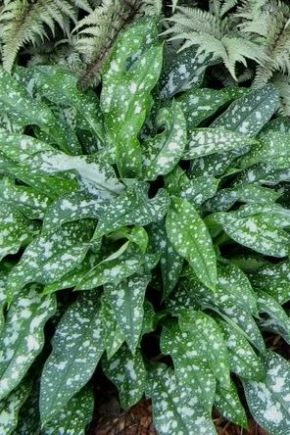
Medunitsa relatively recently began to appear in the gardens and vegetable gardens of enthusiastic flower growers. Before that, it could only be found in the depths of a deciduous forest. Thanks to the work that the breeders have done, this culture has acquired an extensive classification of species with its own characteristic features. And now this plant has gained great popularity, because with its help you can easily transform any garden or flower bed.
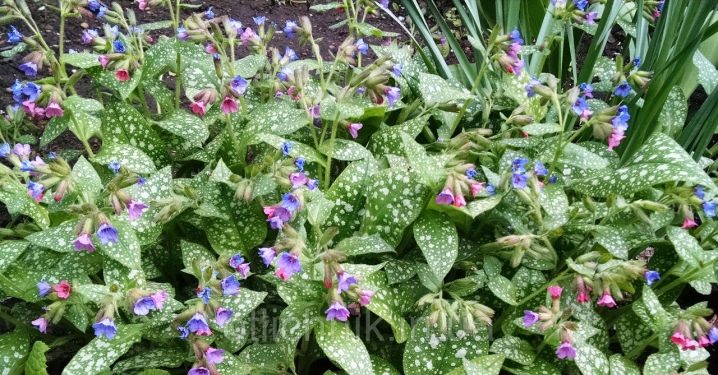
general description
The common lungwort is a vivid representative of the herbaceous plant species, which has a number of noticeable characteristics. First of all, such a plant is a perennial, it has a well-developed rhizome with brown scales. Shoots are straight and elongated, slightly pubescent. Soft variegated leaves of a rich green color appear on them.
Depending on the type and variety, the height of the bushes of a given culture can vary greatly: from 10 to 80 cm.Sugar honey, for example, can grow up to 25-30 cm, and medicinal lungwort - only up to 10.
The size of the petioles depends on the location of the leaves: the lower they are, the longer the petioles. And also the higher to the top of the shoots, the smaller the leaves become. The leaves located on the lower tiers can be up to 60 cm long, and the upper ones no longer exceed 5 cm. Inflorescences with flowers of various shades develop on the stems, at the base of which, after they have faded, distinct glossy black seeds appear.
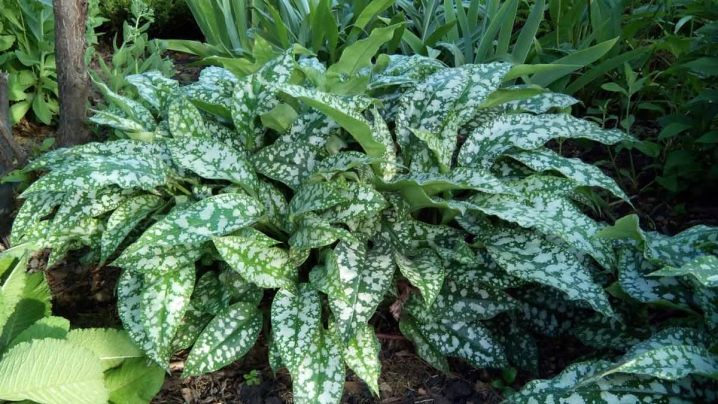
The flowers resemble bells in shape. It is noteworthy that in some inflorescences there can be buds of different colors: purple, red, blue. The shade depends on how acidic the environment inside the plant sap is. Younger flowers have a pinkish tint, but as they mature, they turn blue.
The plant is a decorative decoration for gardens and flower beds. The lungwort is highly regarded for its characteristics among many gardening enthusiasts.

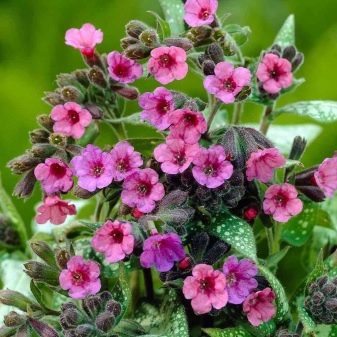
Popular varieties
According to the existing classification, there are about 15 species of this culture, which are considered the main ones. In addition to them, 20 more varieties can be distinguished, which were bred by breeders.
Let's list the most popular varieties.
- Plain. A rare variety that takes root under favorable conditions and warm climates. The culture has wide leaves of amazing color, reaching 20 cm in length. At the beginning of the growing season, the leaves of this variety are characterized by a rich green color, later grayish spots begin to appear on them, eventually merging into one whole. And the leaves become completely white. With the arrival of spring, red-violet flowers begin to appear on the valovid lungwort.
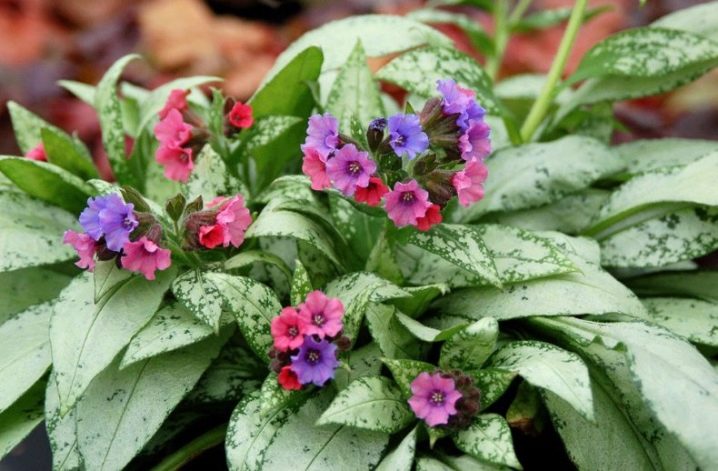
- Long-leaved. The height of the plant can be 25 cm, and the length of the leaves is 50 cm. The leaf blades have an unusual color: the upper green edges are strewn with silvery specks, and the lower ones are completely painted in a silvery green hue. The month to bloom is April. The flowers initially have a pinkish tint, which then turns to blue.
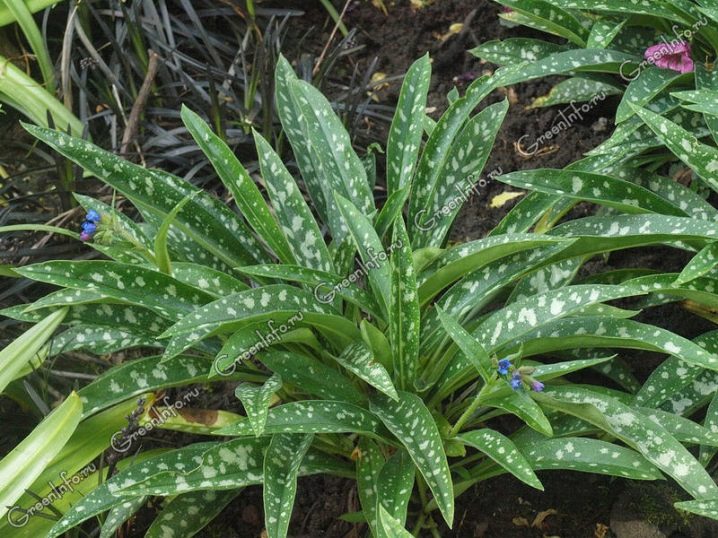
- Spotted. This kind of culture has another name - "Mrs. Moon". The plant is a perennial, the length of which can exceed 30 cm. The stems of this species are elongated in length, closer to the top they begin to branch. There is slight pubescence.This species is characterized by very lush foliage with a lot of spots. In April, the plant begins to bloom: first, purple flowers appear, which then turn blue. It tolerates a drop in temperature well, and in the spring-summer period it needs abundant watering.

- Medicinal. It grows well in wooded areas in countries in Western Europe and Siberia. It can be only about 10 cm in height. Extensive branching is characteristic, as well as the presence of bizarre leaf plates: heart-shaped or ovoid. They are deep green in color. Many grayish spots are found on their surface. In late spring, red buds begin to bloom on the bushes, which gradually turn pink. The variety tolerates low temperatures well.
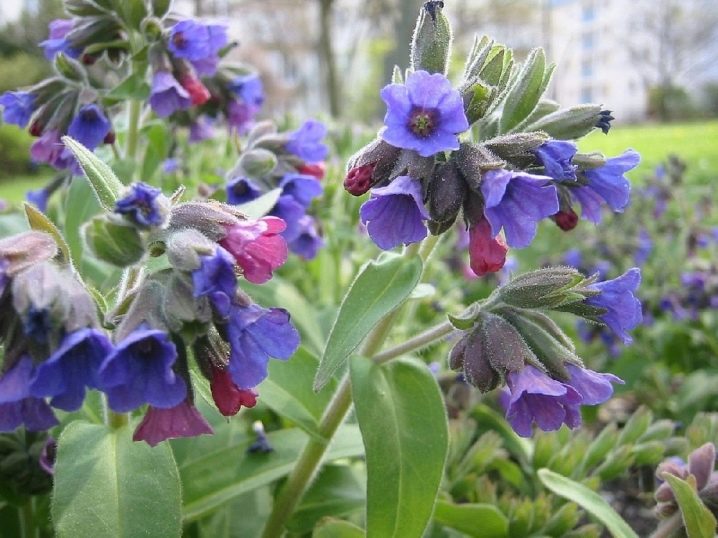
- "Leopard". The bushes reach a length of more than 25 cm.The leaves have a rich light green hue, many light spots are scattered on their plate. In the late spring period, the plant acquires purple-colored buds.

- Silverado. A perennial plant that grows up to 25 cm. The leaf plates have a recognizable dullness, they are light gray in color, and bear numerous specks of green on their surface. Lungwort "Silverado" is able to keep its leaves for a long time. In the spring or summer, purple flowers begin to bloom, which then turn to blue.
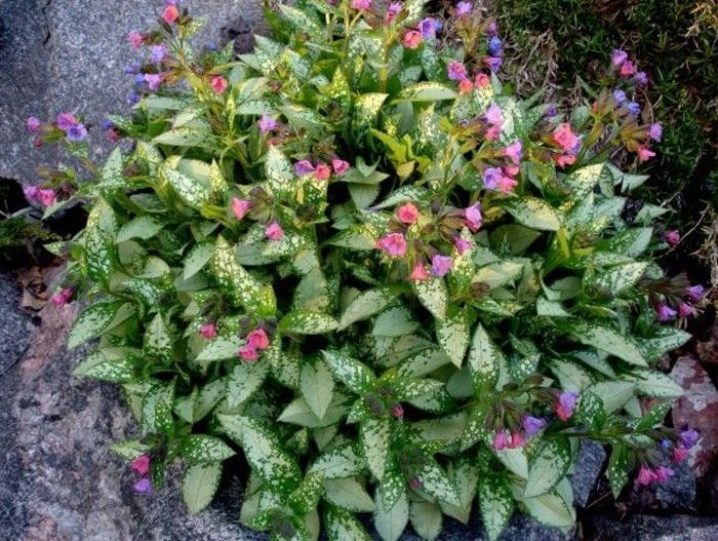
- The softest. The approximate length is 50 cm. Leaves may appear on the plant throughout the season. The plant blooms most actively in spring, sometimes the buds can open even in September. Then purple-blue buds begin to bloom on the bushes.
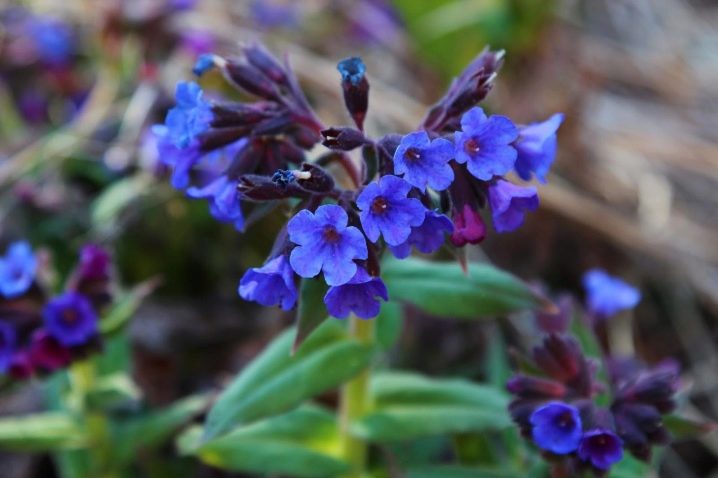
Thus, growers have the opportunity to choose the right plant for themselves based on such a wide variety.
Landing
The generally accepted method of planting lungwort is planting by dividing the bush... They resort to it in the summer, when the flowering time ends. Saplings are planted at a shallow depth. The distance between them is 15 cm.
For their better growth, the soil is mulched with organic fertilizers.
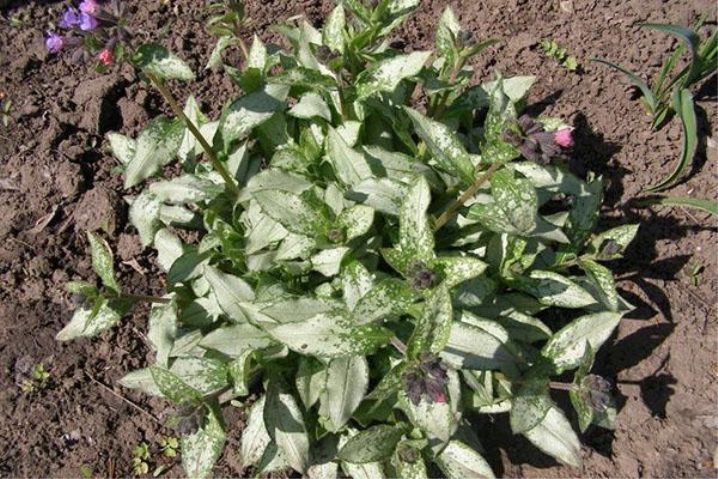
The seed planting method is more used by breeders whose goal is to develop new varieties. The result is a plant that has no maternal traits. In addition, another disadvantage of this method is that flowering occurs much later - only a few years after planting. However, in this way, lungwort reproduces quite well when future seedlings are placed at a distance of several centimeters from each other in loosened soil. For planting, you need to use only fresh seeds of the same year. After the first shoots, they are seated at an even greater distance - up to 10 cm.


Care
A plant planted in an open field is fed with complex compositions of minerals... Fertilizing the plant is preferable in the summer.
The plant must be systematically watered abundantly, however, in no case should the liquid stagnate. In order to ensure optimal moisture intake, you can mulch the soil with sawdust, chopped grass or leaves, compost. This will keep it moist for a long time.
In the spring, damaged or dried leaves are removed from the lungwort. It is forbidden to roughly pluck the leaves, otherwise there is a possibility of touching the growing point. When the lungwort has already faded, then you need to remove all the inflorescences. This is done in order not to spray the seeds. And it can also be useful for a germinating plant, since its growth and development after such manipulation is significantly accelerated.

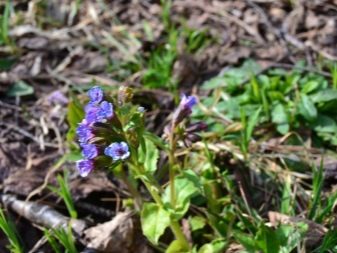
Before the beginning of winter, the bush must be covered to protect it from frost.
Reproduction
This culture is propagated in different ways.
- By dividing the bush. Thus, the new plant retains all the maternal characteristics. This method is used to plant long-leaved and sugar lungwort.

- Seeds... This method is used less often than others, and most often it is propagated by the softest lungwort.


- Through the rhizome segments. The method involves the separation from the root system of several parts of the plant containing the buds. This is how the lumpy, medicinal, narrow-leaved and red lungwort are planted.
When choosing the latter method, it should be borne in mind that it is best to plant bushes at a great distance from each other, since many of the species listed above can increase significantly as they grow.

Diseases and pests
Most harmful insects cannot do significant harm to lungwort. It is also highly resistant to many common diseases. However, if some of the rules for caring for the plant are not followed, as well as when the temperature drops, it can be significantly affected. If a period of heavy rainfall begins, or the bush is watered too abundantly, then its root system begins to actively rot. With constant changes in weather conditions, lungwort begins to suffer from developing putrefactive processes. Powdery mildew often occurs.


The leaves damaged by these ailments are carefully collected and set on fire away from healthy foliage. The latter is carefully treated with sulfur-containing preparations.
Sometimes, with high humidity, the plant can suffer from the harmful effects of various slugs and snails on it.
To avoid this, you need to constantly monitor the abundance of watering, as well as cultivate the soil by removing weeds. The plant itself must be periodically thinned out for preventive purposes.
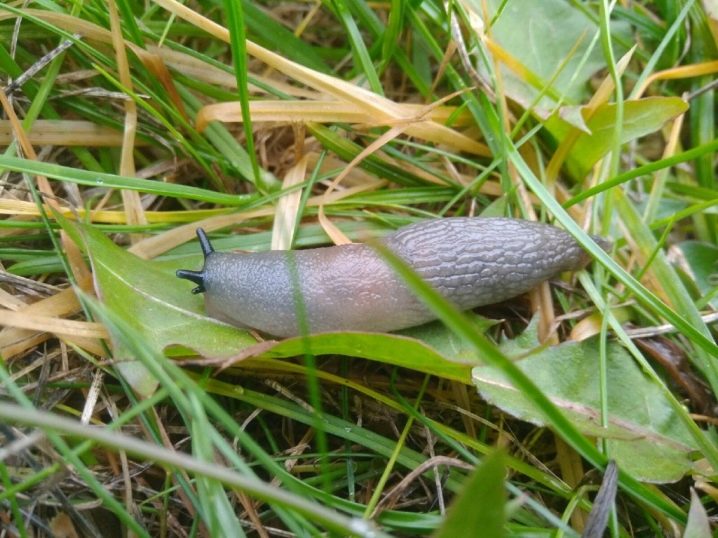
Use in landscape design
Many connoisseurs have recently increasingly turned their attention to this culture. It is perfect for decorating gardens or flower beds. Sugar honeycomb can be successfully combined with other ornamental plants, especially with conifers. And together with shrubs of other similar species, lungwort forms a beautiful border or hedge. You can plant lungwort next to crocuses, daffodils or phlox. It is this plant that becomes a garden highlight against the background of all the others due to its extraordinary ability to change the color of its buds.

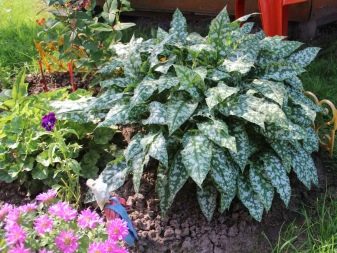







































































































The comment was sent successfully.